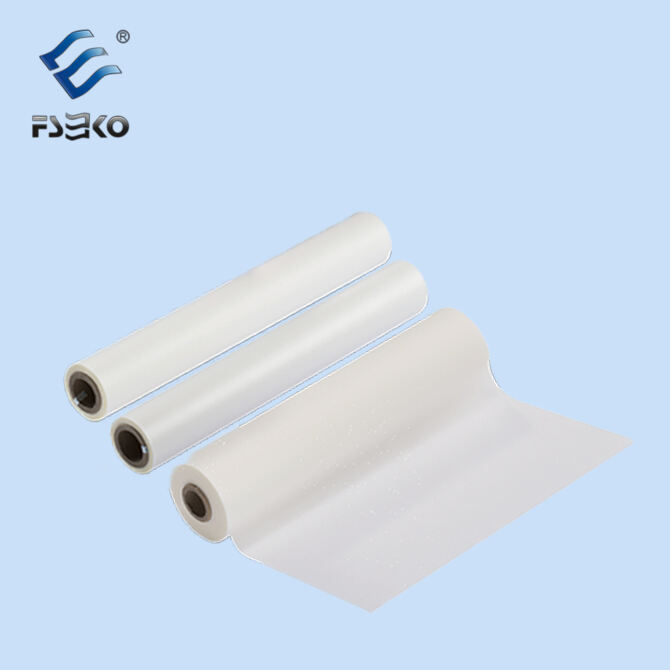Laminasi penting untuk industri percetakan karena melindungi dan memastikan umur panjang barang cetakan. Faktor tertentu seperti ketebalan, finishing, dan jenis perekat harus diperhatikan saat memutuskan film laminasi yang tepat. Dalam artikel ini, kami akan memberikan wawasan mengapa memilih film yang tepat penting untuk kebutuhan percetakan Anda, karena ini akan memastikan bahwa bahan Anda berkualitas tinggi dan tahan lama.
Menjelaskan Film Laminasi
Film laminasi bervariasi dalam jenis dan spesifikasi memastikan bahwa ada film untuk setiap aplikasi. Film laminasi yang paling umum digunakan adalah film laminasi termal dan film laminasi sensitif tekanan. Jika Anda membutuhkan perekat yang kuat, maka film laminasi termal adalah pilihan yang tepat karena mereka memerlukan panas untuk mengaktifkan perekat dan suhu membuat film tahan lama dan dapat diandalkan untuk mesin berat. Untuk bahan yang lebih kecil atau sensitif terhadap panas yang tidak disarankan untuk menggunakan panas, film sensitif tekanan bisa menjadi pilihan yang lebih baik karena mereka tidak memerlukan panas untuk aplikasi.
Bagaimana Ketebalan Film Dapat Mempengaruhi Gaya Bahan Cetak
Ketika Anda memutuskan untuk menggunakan film laminasi pada bahan cetak Anda, ketebalan film sangat penting. Tergantung pada aplikasinya, ketebalan dapat bervariasi. Misalnya, film yang lebih tebal adalah pilihan ideal untuk sampul buku, poster, dan menu karena memiliki ketahanan tinggi terhadap aus dan robek. Di sisi lain, film yang lebih tipis cocok untuk foto dan kartu nama karena memiliki komposisi yang halus. Mengingat aplikasi Anda akan bermanfaat dalam jangka panjang untuk menjaga bahan cetak Anda.
Memilih Finishing yang Tepat
Saat dicetak, penampilan material dapat lebih diubah dengan menerapkan finishing seperti film laminasi. Jenis finishing yang umum digunakan adalah matte, glossy, dan satin. Jika Anda ingin meningkatkan warna bahan cetakan atau menambahkan foto yang cerah ke aplikasi seni grafis, maka finishing glossy adalah pilihan yang bagus, namun, penting untuk dicatat bahwa mereka tidak bekerja dengan baik terhadap silau dan sidik jari. Sebaliknya, finishing matte cocok untuk teks tetapi terlihat kurang berwarna dibandingkan finishing glossy. Finishing satin adalah yang terbaik jika Anda menginginkan sesuatu di antara glossy dan matte, aplikasi ideal dari finishing satin adalah aplikasi yang tidak memerlukan terlalu banyak kecerahan. Bisa dikatakan bahwa hanya dengan finishing sederhana, estetika keseluruhan dari item cetakan dapat berubah secara signifikan.
Jenis Perekat
Film laminasi tersedia dalam berbagai jenis perekat dan dapat mempengaruhi aplikasi serta kekuatan produk akhir. Contoh yang baik dari ini adalah beberapa jenis film yang menggunakan perekat permanen yang kuat yang terikat kuat pada bahan cetak untuk memastikan perlindungan jangka panjang. Atau mungkin menggunakan perekat yang dapat dilepas yang memungkinkan penempatan ulang film saat menerapkannya pada permukaan. Setelah memahami sifat perekat, akan lebih mudah untuk memilih film yang sesuai dengan kebutuhan Anda, apakah itu film permanen atau sementara.
Pola Saat Ini dan Arah yang Disarankan
Film laminasi juga memiliki kecenderungan yang besar untuk beradaptasi dengan teknologi baru yang tersedia di industri percetakan dan berbagai pilihan yang ada. Tren terbaru menunjukkan peningkatan permintaan untuk film laminasi ramah lingkungan yang akan mengurangi dampak terhadap lingkungan sambil tetap berkinerja sangat baik. Bahan yang dapat terurai dan didaur ulang terus berkembang, menarik pasar yang peduli lingkungan. Dan dengan meningkatnya permintaan untuk printer digital, jenis film laminasi tertentu yang dirancang untuk meningkatkan kualitas dan ketahanan cetakan memperkuat kebutuhan ini. Jika bisnis menyadari tren ini, mereka akan lebih siap untuk beradaptasi memenuhi kebutuhan klien mereka.


